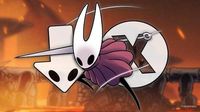After years of anticipation, Hollow Knight: Silksong has finally emerged from the depths, and players around the world are diving headfirst into the treacherous tunnels of Pharloom. The game’s long-awaited release by September 8, 2025, has brought with it a wave of excitement—and a fair amount of gnashing teeth, if the online chatter is anything to go by. For some, the journey has been a triumphant return to the world of Metroidvania exploration. For others, the punishing difficulty spikes and demanding mechanics have been a rude awakening.
According to PC Gamer, the game’s challenge is front and center. One player shared, “My wife has spent three days fighting Moorwing without beating it and she’s dropping the game for good. I hope she’ll pick it back up sometime but it’s sad to see all the anticipation die out like this.” This sentiment is echoed across the r/Silksong subreddit, where debates rage about whether the game’s steep learning curve is a fair test of skill or an exercise in frustration. As another player put it, “Hollow Knight started you off slow and steady, Silksong stabs you and kicks you for crying about it.”
So, what’s behind this spike in difficulty? For starters, Silksong doesn’t coddle. Trapped resting benches, arduous boss runbacks, and an early-game economy so stingy that three bugs can’t even muster up 60 rosaries between them make for a punishing introduction. Resting benches and fast travel points—lifelines for weary adventurers—are locked behind a currency that can be lost for good after two deaths. For players who are struggling, it can feel like every step forward is paid for in blood, sweat, and lost progress.
But it’s not just the world that’s more hostile; it’s the protagonist. Unlike the Knight from the first game, Hornet brings a far more technically demanding moveset to the table. Players are expected to master movement abilities, dash attacks, hovering, and the infamous diagonal pogo—a move that’s become the subject of memes and more than a few exasperated posts. As one reviewer noted, “Hornet is also a lot more technically demanding than the Knight from the first game… you’re expected to use your movement abilities, dash attack, hover, and the aforementioned pogo in combat.”
That diagonal pogo, in particular, has thrown returning players for a loop. In the original Hollow Knight, the downwards attack was, well, downwards—a simple, reliable tool for bouncing off hazards and enemies. In Silksong, Hornet’s version darts at a 45-degree angle, sending her careening in the direction she’s facing and bouncing back with a flourish. According to a Rock Paper Shotgun writer, “It’s such a small change, but a significant one. It’s already led to innumerable deaths and many failed attempts at striking and bouncing over an enemy, where instead, I either hit the enemy with my body and take damage or miss entirely and go flying off a ledge.”
This altered mechanic doesn’t just affect combat; it changes how players traverse the world. Rooms filled with spiky floors and no platforms become gauntlets of timing and precision. One player recounted their ordeal: “I came upon a room that had obstacles to bounce across, with no platforms, and a spiky floor below. On the other side of the room? Treasure. Sweet, glorious treasure. Luckily, I managed to make it across the first time and grab the treasure, but then… I needed to get back. I tried, lost health. I tried again, lost more health. I tried once more, and I died.”
Despite these frustrations, there’s a sense of satisfaction that comes from overcoming the odds. As the same player admits, “The game feels familiar. The design feels familiar. The bosses feel like Hollow Knight bosses. But this simple move is the thing that’ll catch me out time and time again, until I can master it once more.” For many, the challenge is part of the allure—a badge of honor for those who persevere.
And persevere they must. Silksong boasts over 40 bosses, each one a unique test of skill and patience. Completion times vary wildly depending on a player’s experience and willingness to explore every nook and cranny. According to PCGamesN, the average player can expect to spend about 40 hours to see the credits roll—roughly on par with the first game. For those aiming for 100% completion, that number can easily climb to 100 hours or more. Speedrunner ‘BlueSR’ managed a 100% clear in just 38 hours, but as the site notes, “his skill level is far above that of us mere mortals.”
Progression in Silksong is tracked through acts, with the game appearing to have a maximum of three lengthy acts. Each act is packed with secrets, upgrades, and formidable foes. The power curve is steep: early on, players may find themselves scraping by, but as they acquire new movement mechanics and upgrades, the game gradually becomes more manageable. “Now I’m in Act 2, and I’m accustomed to the movement mechanics, and I have some good tools and upgrades under my belt? I’m actually finding the game easier. It’s a little wonky,” one reviewer observed.
Upgrading Hornet’s primary weapon, the Needle, is a major part of the journey. As detailed by GamesRadar, players must complete a series of Wishes for Pinmaster Plinney in the Threadspun Town of Bellhart. The path to a sharper Needle is anything but straightforward. First, players need to collect Skills like Silk Spear, Swift Step, Drifter’s Cloak, and Cling Grip, then defeat the formidable Widow boss. Only then will Pinmaster Plinney reward their efforts by sharpening the Needle and increasing its damage.
Further upgrades require even more effort. The coveted Shining Needle is unlocked by completing the Pinmaster’s Oil Wish in Act 2, which involves tracking down a vial of Pale Oil between the Choral Chambers and Whispering Vaults. The ultimate weapon, the Hivesteel Needle, demands the completion of the Great Taste of Pharloom Wish—no small feat, as it requires collecting five rare dishes from the farthest reaches of Pharloom. Along the way, players can also find optional upgrades like the Silkspear (which grants a ranged Silk attack), the Barbed Bracelet (which increases both outgoing and incoming damage), and the Longpin (which allows the Needle to pierce tough shells).
Despite the game’s tough-as-nails reputation, there are ways for struggling players to ease their journey. Exploration is key: powerful early-game upgrades are often tucked away in hidden corners, and making use of every available tool can turn the tide in difficult fights. As one seasoned player advised, “If you’re struggling, I encourage you to stay steadfast—and use your dang tools. You can throw knives for a reason.”
Of course, not everyone is thrilled with some of the design choices. Many have voiced frustration that beating a boss doesn’t grant enough rosaries to unlock a bench or upgrade, sometimes forcing players to grind just to access basic conveniences. “I had to grind once just to unlock a freakin’ bench after beating a boss, and I obviously didn’t like it,” one player lamented.
Still, the conversation around Silksong is far from one-sided. For every player who throws up their hands in defeat, there’s another who relishes the challenge and the sense of accomplishment that comes from mastering Hornet’s acrobatic arsenal. The game may not be for everyone, but for those willing to brave its many trials, Silksong offers a rich, demanding adventure that’s sure to linger in the memory long after the final boss falls.




